Behind the Curtain Wall w/ NYC Architect Richard Roth Jr.: Alexander's
Discover an unlikely friendship that emerged from the design of a lost NYC department store!


The Paramount Building has retained a regal presence in Times Square since it was completed in 1927, despite the arrival of many new skyscrapers over the years. Some if its staying power could be in part to the globe and clocktower that crown the 33-story building, designed by architects Rapp & Rapp in the classic setback style that emerged as a result of the 1916 New York City Zoning Ordinance.
According to The Landmarks of New York, the Paramount Building was an architectural “symbol of the company’s role in the motion picture industry.” Theatrical floodlights once lit up each of the building’s setbacks. The globe on top, according to The Landmarks of New York “was placed atop the clocktower to advertise the worldwide activities of Paramount.” The clock face shows five-pointed stars, the Paramount symbol, instead of the hour numbers. A film of the construction, heralding today’s common practice of using time lapse photography and video to document new construction, was made in the 1920s.
Anonymous urban explorers recently shared the below photographs inside and atop the globe and clocktower of the Paramount Building taken sometime in 2018, telling us that while it was exhilarating to finally get up to the narrow open-air walkway around the globe, the way up was hot, stuffy, and cramped. “A single ladder attached to the wall gets you up to one landing (with nowhere to fall but flat on your back) and then you have to squeeze your body into the globe between the lights, and lift yourself into the opening onto the walkway. Definitely would not recommend it for casual explorers.” This description makes sense according to what we know about the history of the Paramount Building. These upper levels were never constructed as an observation deck, unlike other Art Deco skyscrapers like 70 Pine, the Woolworth Building, the Chanin Building and others.
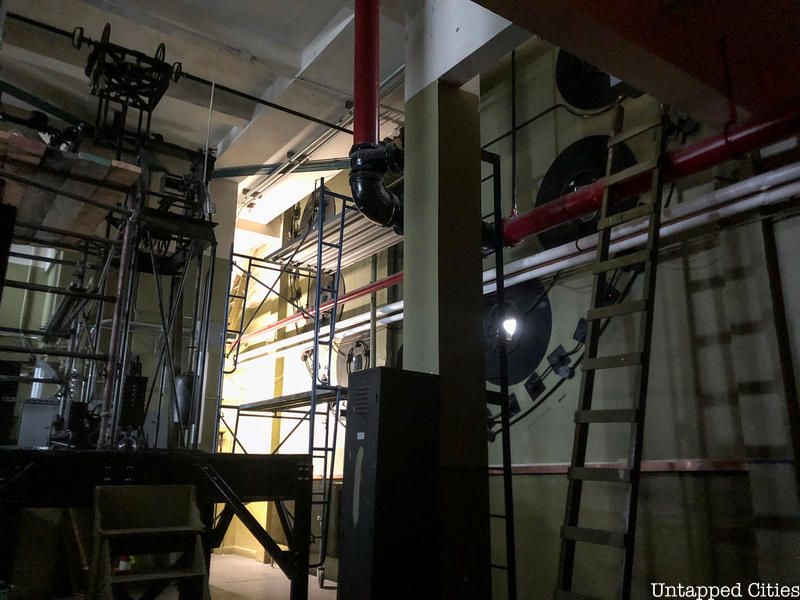
Behind the clock

Behind the clock



Inside the globe
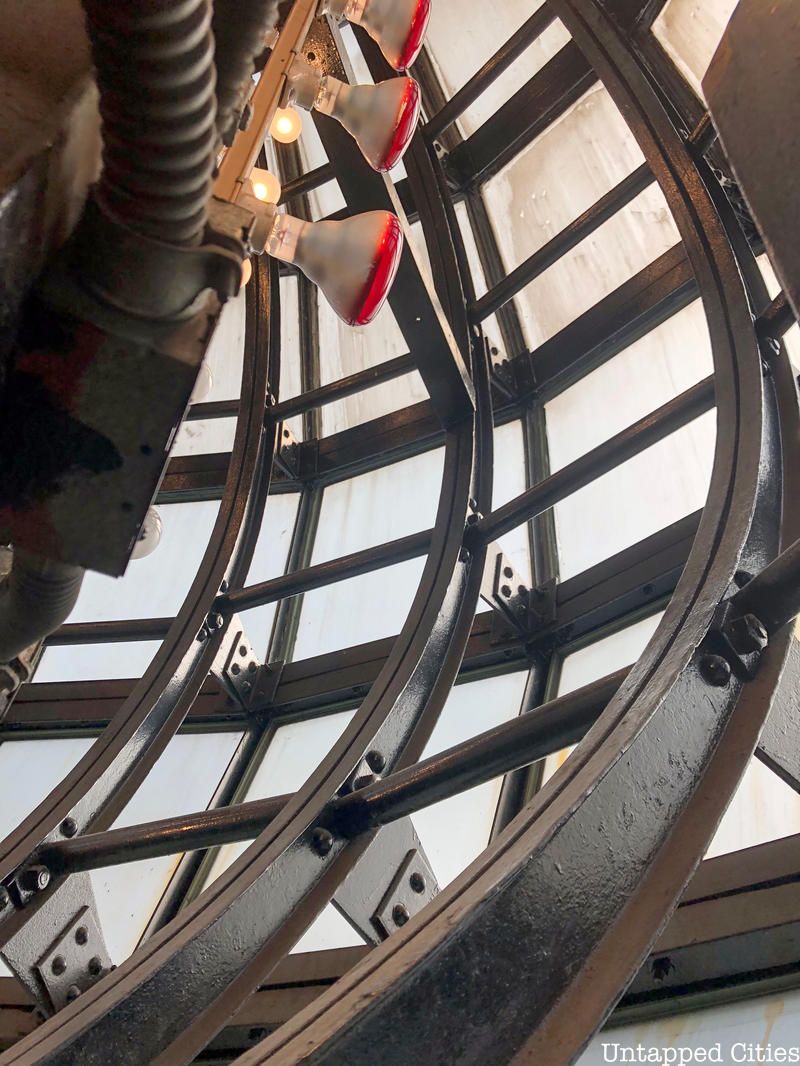
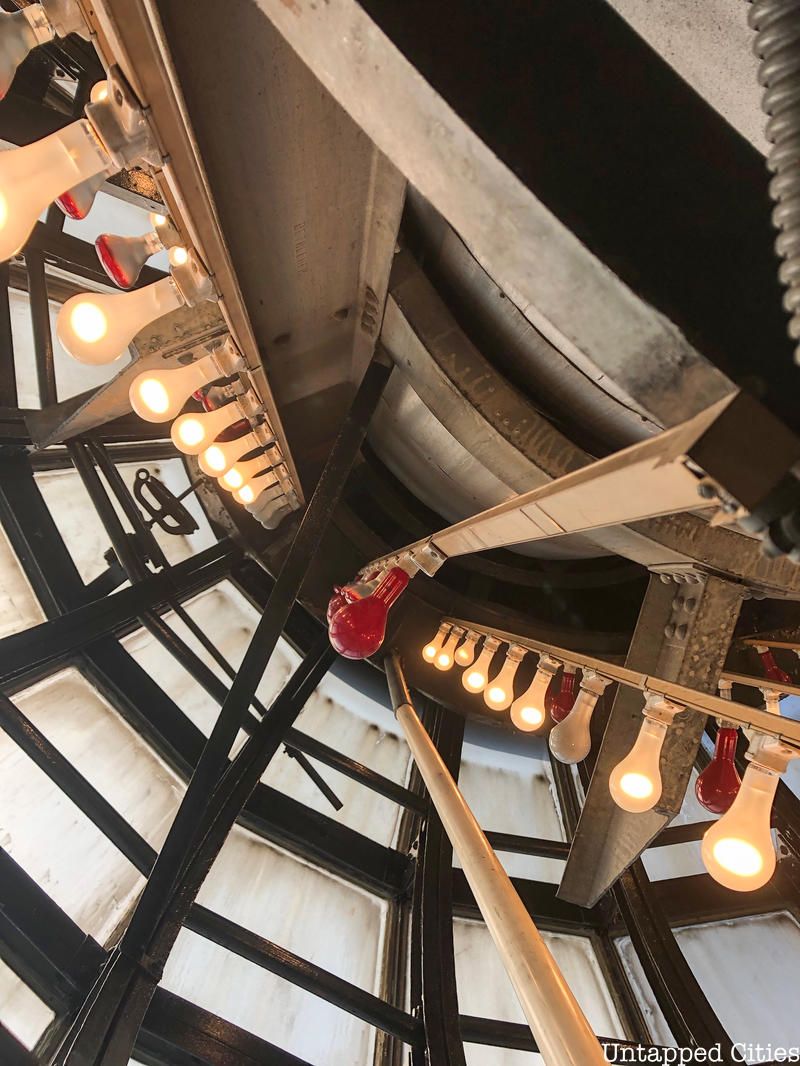
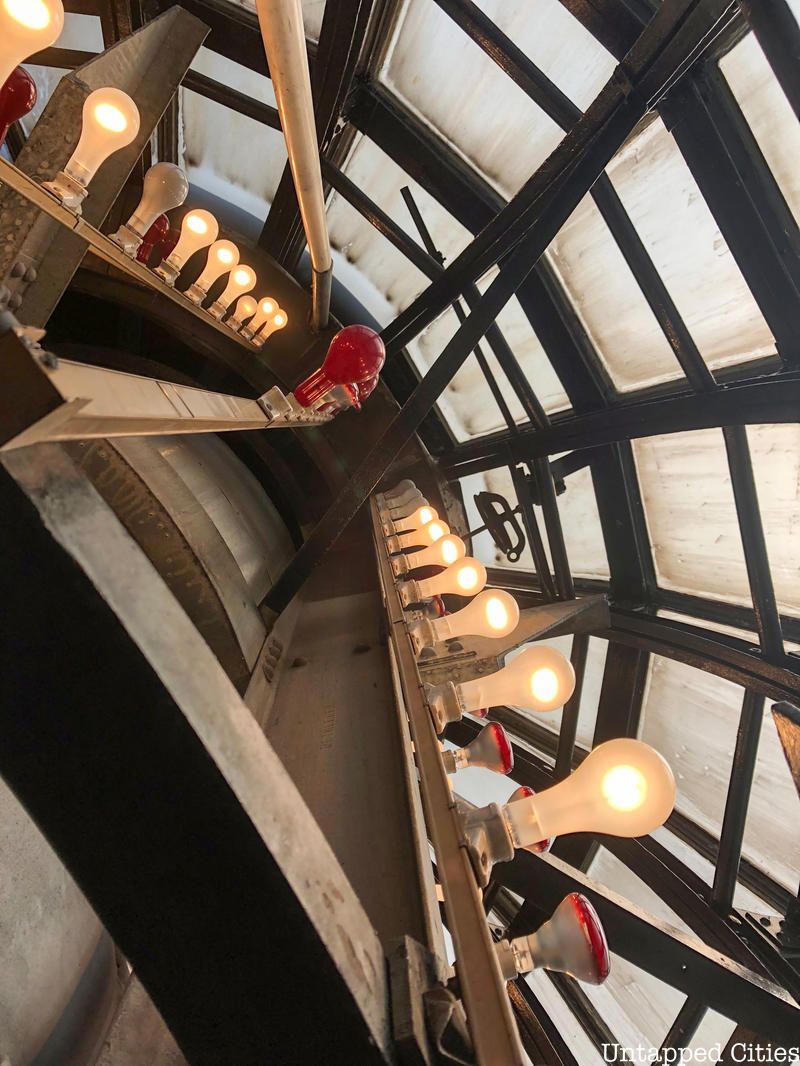
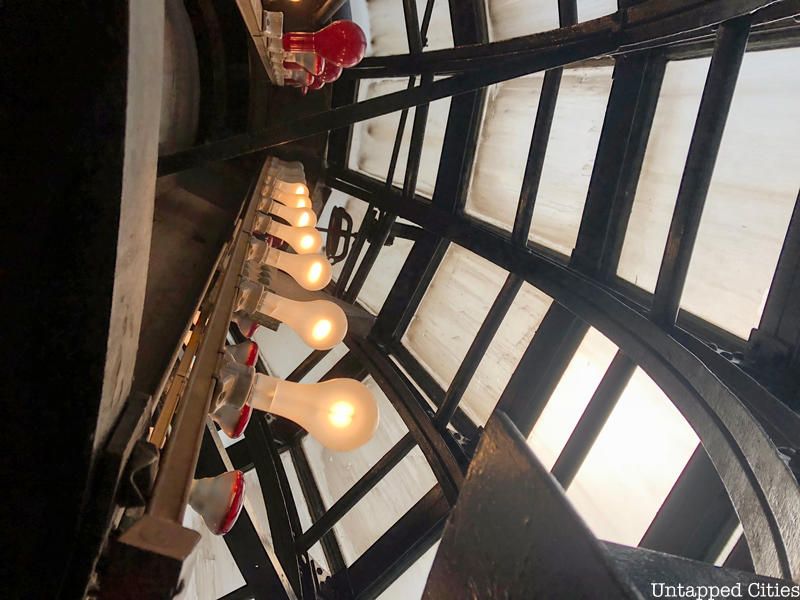
The views from the globe include a glimpse of the Empire State Building, a view up 7th Avenue, a view of the New Year’s Eve ball atop One Times Square, and a view of the Hudson River.
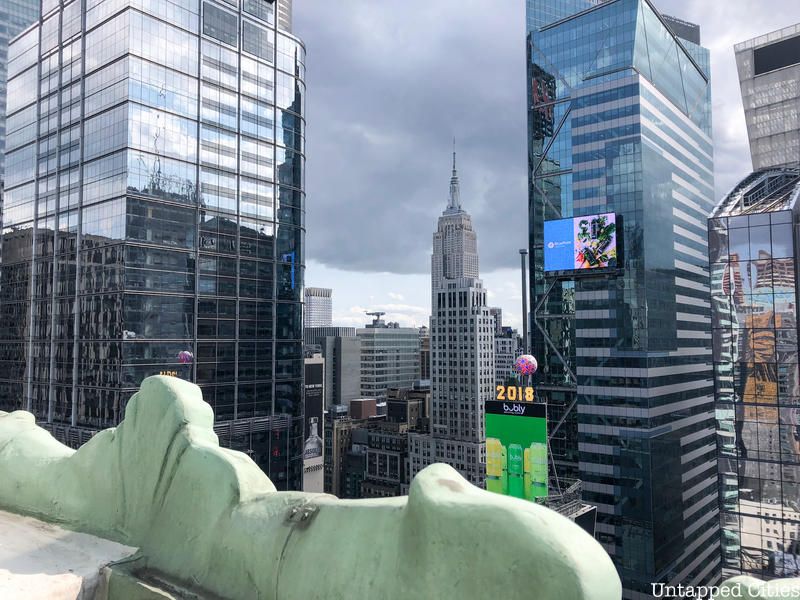

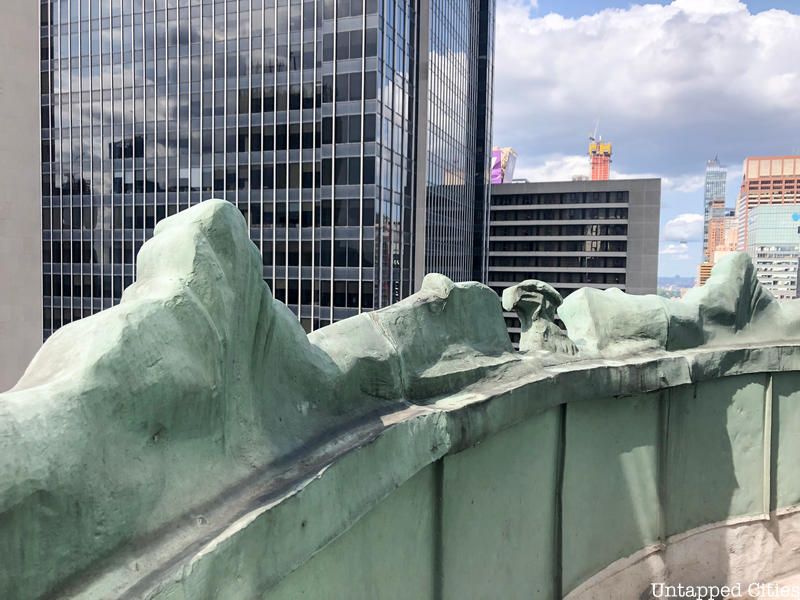
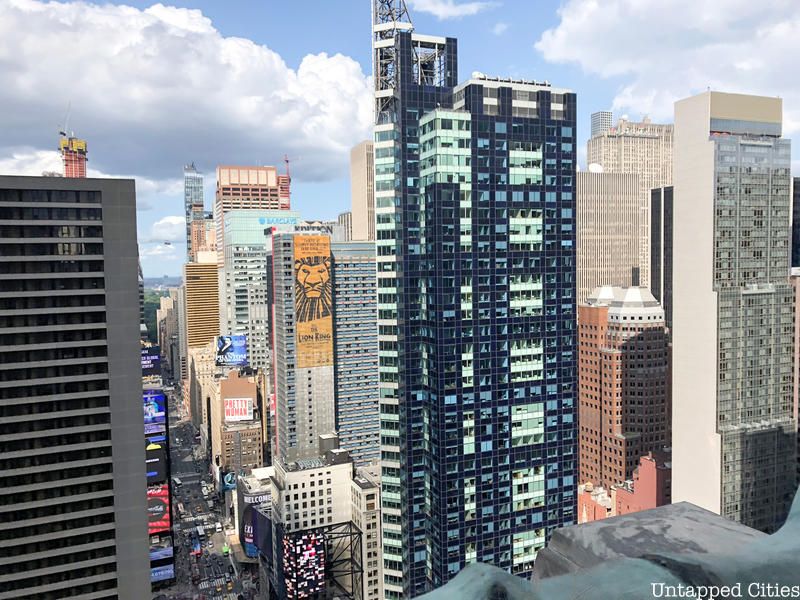

The architects Rapp & Rapp were also responsible for the 3,700 seat movie theater that was located inside the building, just one of a long line of movie theaters the firm designed throughout the 1920s and 1930s. According to The Landmarks of New York, Rapp & Rapp’s theater designs “became the model for the opulent ‘movie palace’ typical of the era.” (Radio City Music Hall also owes a debt to George Rapp, who was a consulting architect).

The French-style theater played host to stars like Frank Sinatra, Dean Martin, Buddy Holly, Jerry Lewis, Benny Goodman, and Jack Benny. It also was the site of the world premiere of Elvis Presley’s first movie Love Me Tender. Between 1966 and 1960, the theater was demolished when the building was converted into offices and retail. The marquee and arched entranceway that exists along Broadway today is in fact a recreation from 2001 by architecture firm Tobin Parnes, and the globe and clock were restored in 1997 by Spectacolor Communications. The entrance of the building was moved around the corner last year from Broadway to 44th Street.
If you have the opportunity to visit a company located inside the building, you can see the beautiful lobby with Paramount Pictures logo above the escalators and original gilded elevators:
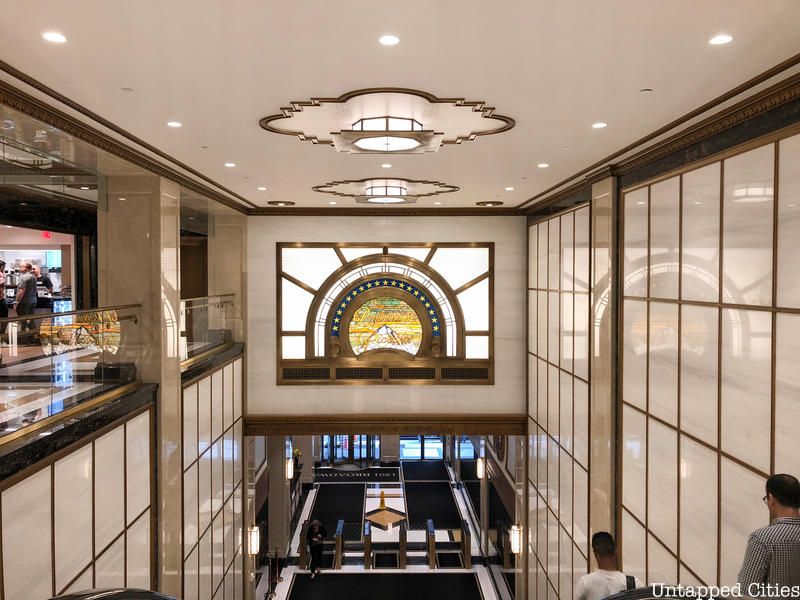
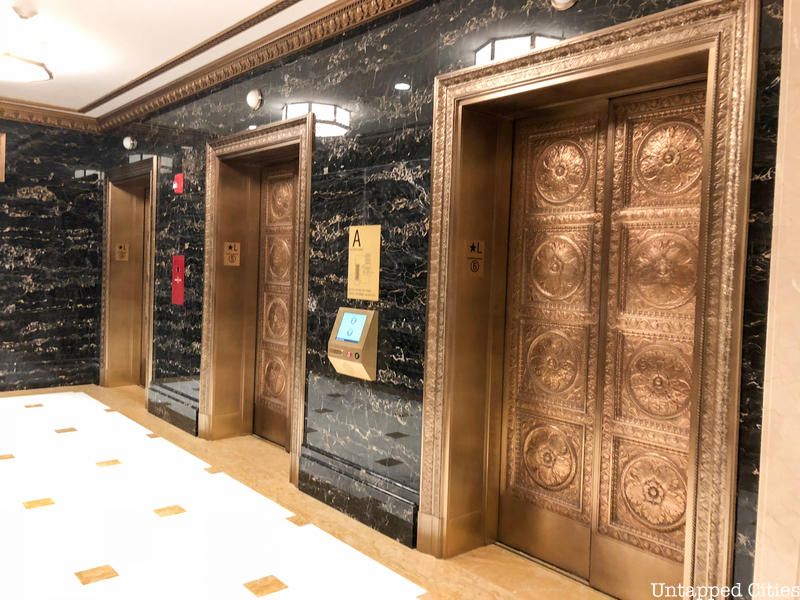
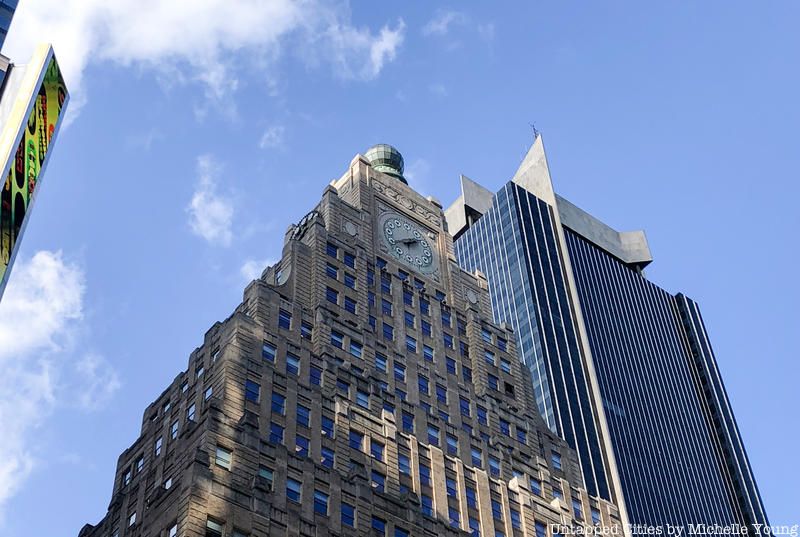
Want to learn more about the history of Times Square? Join our next tour of the Gritty Old Times Square to discover the Times Square showcased in the HBO show The Deuce:
Subscribe to our newsletter